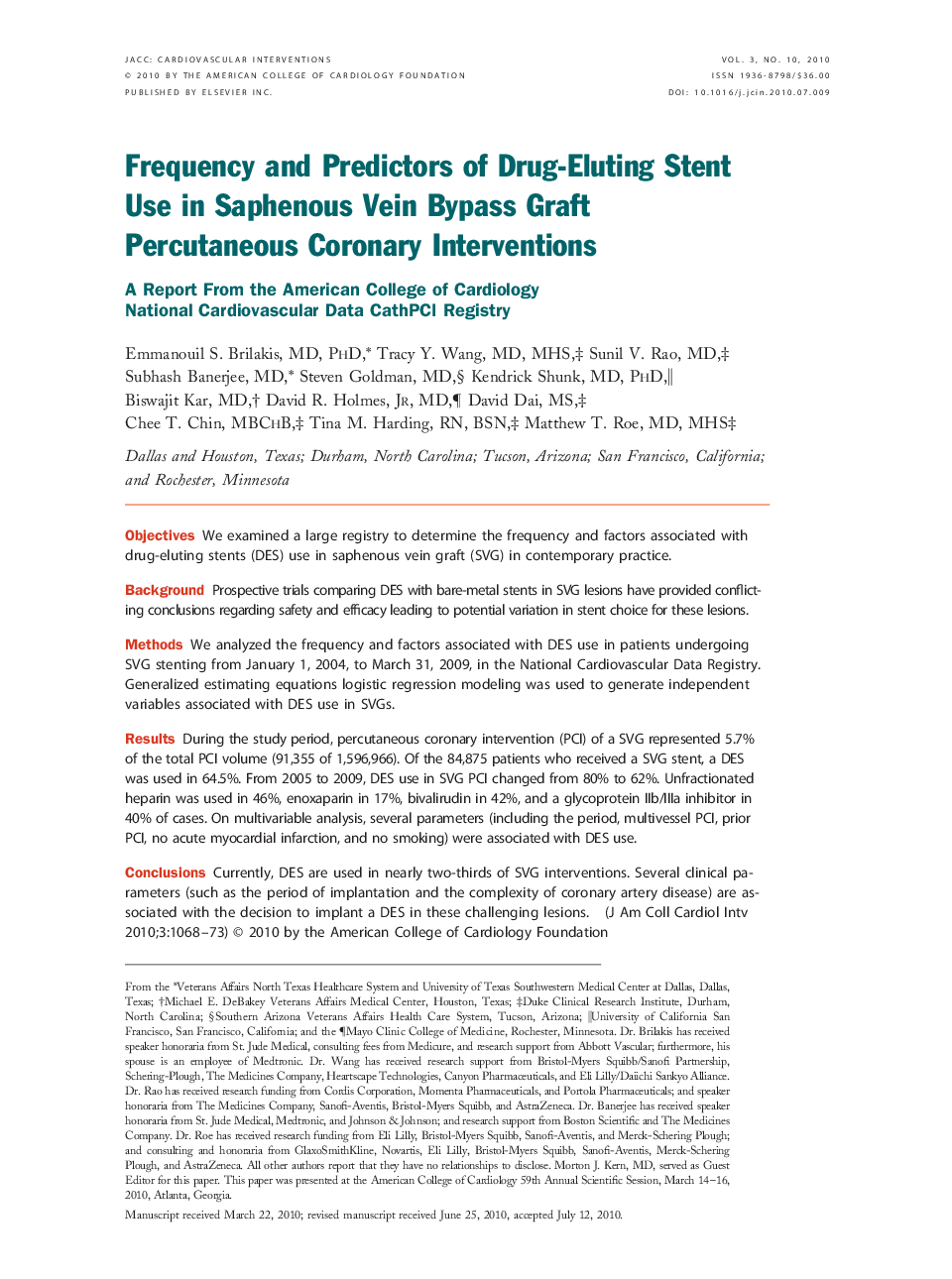| Article ID | Journal | Published Year | Pages | File Type |
|---|---|---|---|---|
| 2941380 | JACC: Cardiovascular Interventions | 2010 | 6 Pages |
ObjectivesWe examined a large registry to determine the frequency and factors associated with drug-eluting stents (DES) use in saphenous vein graft (SVG) in contemporary practice.BackgroundProspective trials comparing DES with bare-metal stents in SVG lesions have provided conflicting conclusions regarding safety and efficacy leading to potential variation in stent choice for these lesions.MethodsWe analyzed the frequency and factors associated with DES use in patients undergoing SVG stenting from January 1, 2004, to March 31, 2009, in the National Cardiovascular Data Registry. Generalized estimating equations logistic regression modeling was used to generate independent variables associated with DES use in SVGs.ResultsDuring the study period, percutaneous coronary intervention (PCI) of a SVG represented 5.7% of the total PCI volume (91,355 of 1,596,966). Of the 84,875 patients who received a SVG stent, a DES was used in 64.5%. From 2005 to 2009, DES use in SVG PCI changed from 80% to 62%. Unfractionated heparin was used in 46%, enoxaparin in 17%, bivalirudin in 42%, and a glycoprotein IIb/IIIa inhibitor in 40% of cases. On multivariable analysis, several parameters (including the period, multivessel PCI, prior PCI, no acute myocardial infarction, and no smoking) were associated with DES use.ConclusionsCurrently, DES are used in nearly two-thirds of SVG interventions. Several clinical parameters (such as the period of implantation and the complexity of coronary artery disease) are associated with the decision to implant a DES in these challenging lesions.
